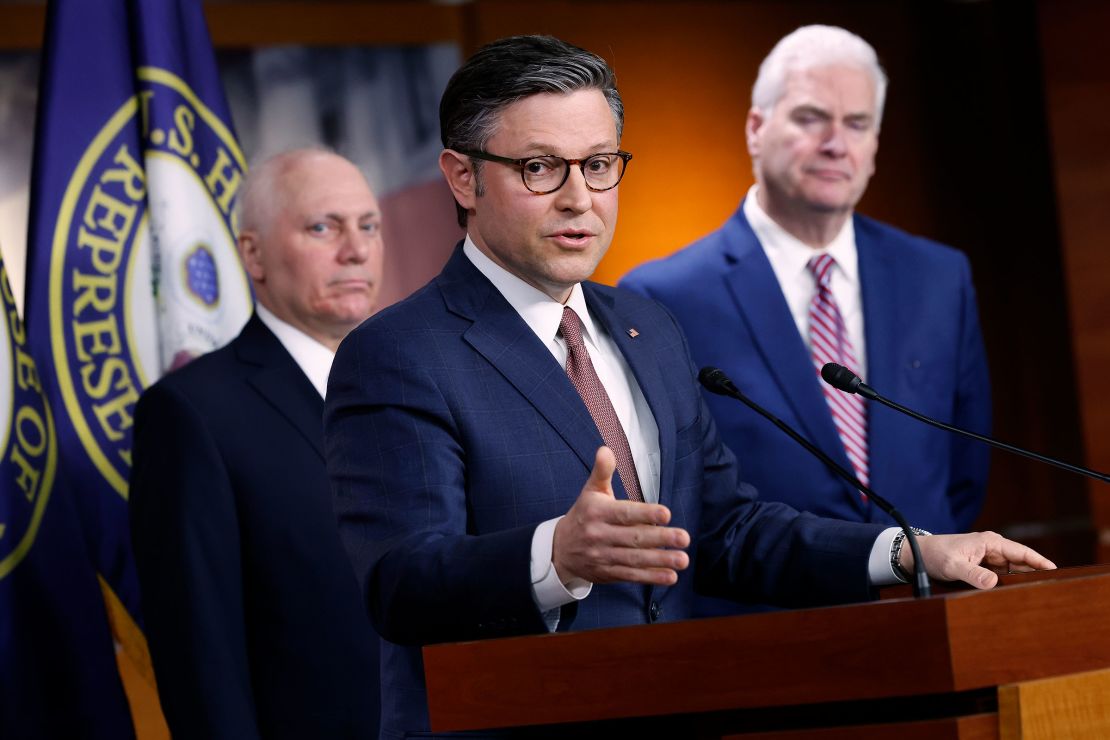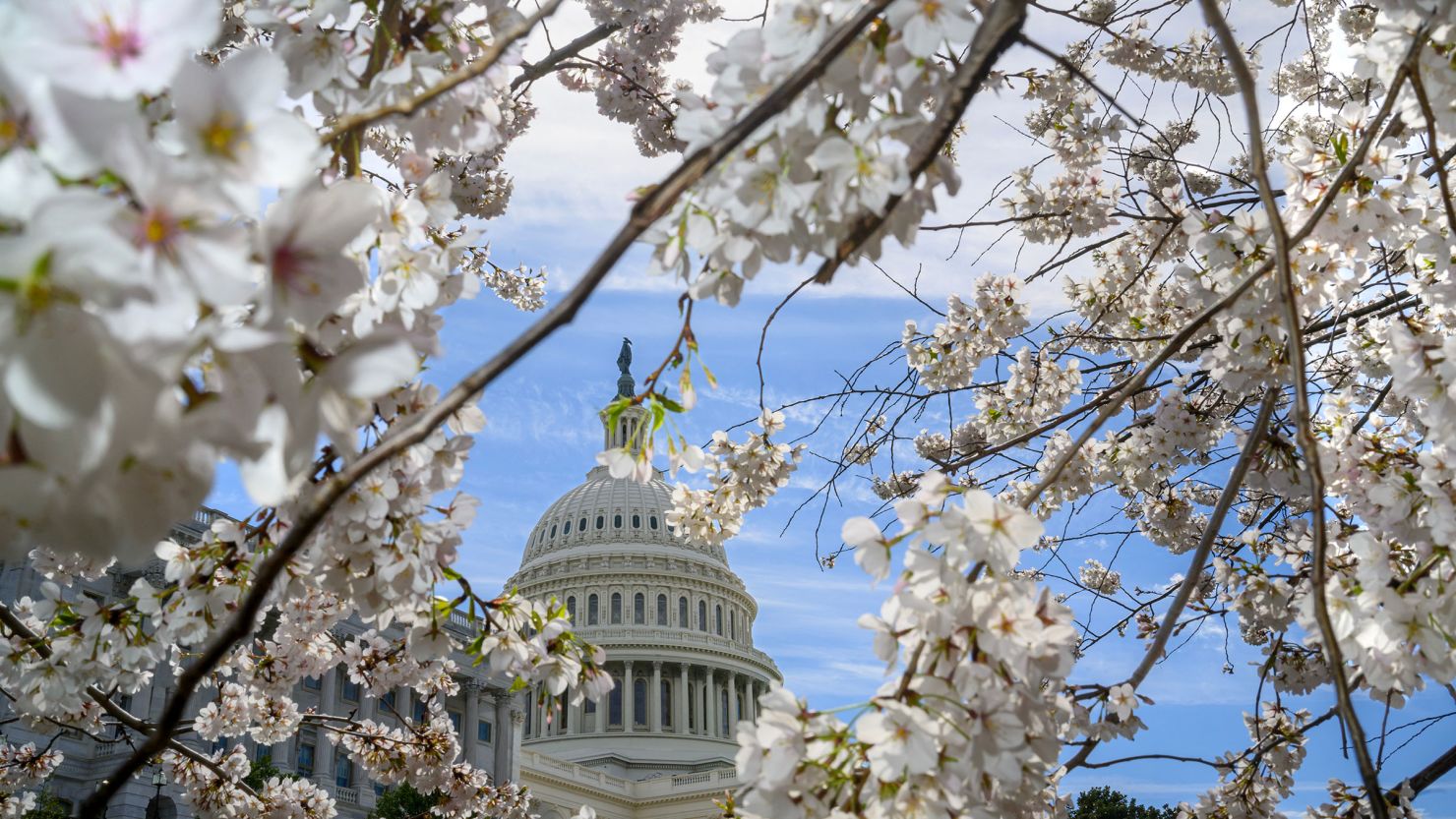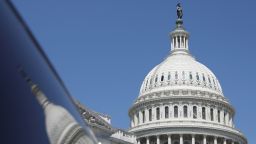A version of this story appeared in CNN’s What Matters newsletter. To get it in your inbox, sign up for free here.
Add $1.2 trillion in government spending bills to the short list of things where it’s fine to barely miss – horseshoes, hand grenades and taxpayer dollars.
The multi-act, epic saga of funding the government for the fiscal year that is nearly halfway over is finally at its end, but maybe not before funding lapses for much of the government after 11:59 p.m. ET Friday.
It’s not exactly a shutdown if lawmakers can pass the package close to on time, before the end of the weekend. Internal Revenue Service workers won’t be furloughed during tax season and border agents won’t be working without pay.
The asterisk of a temporary lapse in funding would be the drama-free result of parliamentary procedure rather than a pitched policy standoff – assuming everything goes according to plan.
Here’s what to know:
How is this story going to end?
All indications are that the final departments of the federal government will get full-year funding in short order. It might not happen until over the weekend or early next week, however, which is after funding lapses.
So there’s going to be a government shutdown?
Maybe. But not exactly. The temporary lapse in funding over the weekend for parts of the government would be so short that it would likely have a very limited impact on government operations.
Why don’t they just pass the bill before funding lapses?
Republicans in the House have made a very big deal about publishing text of bills a full 72 hours before they get final votes.
The 1,000-plus pages of text for this bill was put online just before 3 a.m. Thursday morning. If lawmakers were given 72 hours to read it, they would not be able to vote until 3 a.m. Sunday.
Instead, it appears House Speaker Mike Johnson will get help from Democrats to waive that 72-hour rule and vote on the bill Friday in the House.
The Senate would then need to get past its own procedural hurdles. Assuming no senator decides to really slow things down, they could vote over the weekend.
Asked on CNBC Thursday if he would waive the 72-hour requirement, Johnson said he supports the principle and wants members to read bills before they vote on them. They should be reading this bill now, he said, suggesting they might not get the full three days.
“I think we have to get this done by the weekend, because I think the stakes are too high,” Johnson said.
Has a short-term, no-big-deal lapse in government funding ever happened before?
Short-term, no-big-deal government funding lapses like this possible one are not unprecedented.
In 1982, for instance, lawmakers had a deal in place to fund the government, but they ran out of time to pass the funding bills. Republicans were set to attend a barbecue at the White House. Tammy Wynette sang “Stand By Your Man,” as then-President Ronald Reagan looked on. Democrats were bound for a fundraiser.
Funding lapsed, but they went back to work the next day. Granted, that was at the end of September, when the fiscal year ends. This year, a potential temporary lapse for part of the government will occur almost six months late, when the fiscal year to be funded is already nearly halfway over.
A Congressional Research Service review of previous funding lapses since the concept was created in 1980 notes that brief lapses – those lasting less than three days – often do not result in much of anything shutting down, particularly when there is an expectation that the appropriations bills are coming.
Why did funding the government take so long this year?
Republicans took control of the House in January 2023, but this is the first set of spending bills on which their majority could make a mark.
But neither the House nor the Senate passed their 12 appropriations bills on time. Instead, they agreed to a short-term extension back in September. The right wing of the party was frustrated that then-House Speaker Kevin McCarthy couldn’t win more concessions from Democrats who control the Senate.
The hard-liners in the GOP ousted McCarthy from the top spot in the House, and it took three weeks for Republicans to settle on Johnson as McCarthy’s replacement.
Johnson then pushed a series of three more temporary funding bills while negotiations for the full-year funding proceeded. Last-minute standoffs over border spending delayed the final product to Thursday.
How much of the government is being funded with this bill?
Six departments of the federal government are included. They are Defense, Homeland Security, Labor, Health and Human Services, Education, State and the legislative branch. The other six departments were funded with a bill that passed earlier in March.
Why was full-year funding considered in two batches?
That was Johnson’s idea. Shortly after he took over as speaker, he proposed this bifurcated process as a way to take some pressure out of the process.
How is the process supposed to work?
Not like this. Appropriations committees in the House and Senate are supposed to work out bills for various federal departments. Those should be considered separately, and then House and Senate versions should be reconciled.
It’s only happened that way a handful of times in the decades since the process was adopted. Instead, the committees work out their versions of the bill and then they are cobbled into larger bills by House and Senate leaders.
What’s in this current deal?
Republican leaders are proclaiming some victories, including cuts to diversity programs at the Pentagon and cuts in IRS enforcement, among other things. The deal boosts defense spending with pay hikes for service members but keeps most other spending in line with current levels.
“We got some of the things we wanted. We didn’t get everything we wanted,” Johnson said on CNBC, noting his current two-seat House majority doesn’t allow him to get more in terms of government spending cuts.

But it will take some time for lawmakers, reporters and watchdogs to read the fine print. Here’s what CNN’s report says about the broad outlines:
The package provides $19.6 billion for Customs and Border Protection, a $3.2 billion increase above fiscal year 2023, and includes $495 million for additional Border Patrol agents, which the Biden administration has repeatedly called for. It does not add funding for the border wall.
The package also provides almost $90 billion in discretionary funding to the Department of Homeland Security, bolstering funding for additional resources. It funds 41,500 detention beds, which is more than the previous fiscal year and Biden’s request, according to the GOP summary. US Immigration and Customs Enforcement had recently drafted plans to wind down detention space, and as a result, release migrants, to cover their budget shortfall.
The bill also increases Department of Defense funding, providing $824.3 billion, an increase of $26.8 billion above fiscal year 2023.
It also provides an additional 12,000 special immigrant visas for Afghans who helped the US.
Read a more in-depth look at what’s in the bill from CNN’s Tami Luhby and Katie Lobosco.
A bipartisan spending bill. How did this happen?
This is not the outcome predicted by many pundits when earlier acts of this same funding process saw the right wing of the Republican Party reject a House speaker in large part for working with Democrats to keep the government open.
Instead, the conservative replacement, Johnson, has carried on largely in the footsteps of McCarthy, who has departed from Congress.
If the package passes, the government will be funded for the rest of this year because Johnson agreed to pass yearlong funding bills with help from Democrats. While the right-wing Republicans who ousted McCarthy are fuming, they are also not yet organizing an effort to oust Johnson.
Short-term funding lapse or not, this is something approaching governing.



